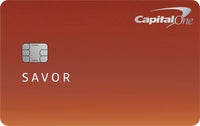Best high-limit credit cards




You may qualify for a high-limit credit card if you have a steady income and good to excellent credit. However, several factors dictate the actual credit limit for your new card, regardless of how high the limit can potentially get. For example, if you have a lot of existing credit card debt and your credit utilization is high, card issuers may not want to give you too much room to rack up more debt.
Card issuers don’t typically share the specific requirements for credit card approval, nor do they readily share the highest limits they’ll offer. High-limit credit cards generally come with credit limits of $10,000 or more. Of course, what’s considered a high credit limit will vary depending on a person’s credit history, income and the card they’re interested in, among other factors.
Issuers typically don’t divulge the range of credit limits they extend to customers. But, if you want to apply for a card with a high credit limit, your best bet will usually be to apply for premium rewards cards and business credit cards. Issuers of these cards in particular may be able to offer larger credit lines based on your or your company’s spending needs.
Below, we’ll break down some of the top credit cards with the potential for high credit limits.
Comparing the best high-limit credit cards
| Card name | Best for | Annual fee | Possible credit limit | Bankrate score |
| Chase Sapphire Reserve® | Luxury travel | $550 | Starting: $10,000 | 5.0/5 |
| Chase Sapphire Preferred® Card | Travel | $95 | Starting: $5,000 | 4.8/5 |
| Capital One Savor Cash Rewards Credit Card | Everyday purchases | $0 | Starting: $10,000 | 5.0/5 |
| Petal® 2 “Cash Back, No Fees” Visa® Credit Card* issued by WebBank | No credit history | $0 | Max: $10,000 | 5.0/5 |
| Capital on Tap Business Credit Card | Small business owners | $0 | Max: $50,000 | 3.5/5 |

Chase Sapphire Reserve®
-
The Chase Sapphire Reserve® card’s terms and conditions claims the card offers a minimum credit limit of $10,000. However, you’ll need excellent credit to qualify for this premium card, not to mention it includes a high annual fee of $550. But you’ll get a number of perks, rewards and benefits in exchange, which should help you to offset the cost of carrying this card.
-
Pros
- Generous travel protection benefits pair well with this card’s rewards rates and redemption bonuses for travel purchases using Chase Travel℠.
- A $300 travel credit offsets more than half of the card’s annual fee each account anniversary.
Cons
- While this card has lounge access, it lacks access to a variety of top luxury airport lounges and hotel perks that you can find on other premium travel cards.
- Its sign-up bonus pales in comparison to welcome offers on competing cards.

Chase Sapphire Preferred® Card
-
The Chase Sapphire Preferred® Card starts off with a credit limit of at least $5,000 (as outlined in the card’s terms and conditions). This card also has the same welcome bonus as the Sapphire Reserve, making it a much more appealing option for anyone hesitant of the Reserve card’s high annual fee. Although you still have a $95 annual fee with the Preferred card, the rewards you earn are truly versatile.
-
Pros
- Generous rewards rates for travel and everyday categories make it a great card for leveraging routine expenses into a travel redemption strategy.
- This card offers valuable rewards for redemptions using the issuer’s travel portal despite its relatively low annual fee.
Cons
- Its annual fee may be difficult to offset if you don’t redeem your rewards for travel using the issuer’s portal.
- This card lacks an introductory APR for purchases and balance transfers, two benefits that offer a generous reprieve from mounting interest charges.

Capital One Savor Cash Rewards Credit Card
-
The Capital One Savor Cash Rewards Credit Card offers a potentially high credit limit, though the issuer doesn’t publish information about it. However, users have reported starting credit limits of $10,000. This card also comes with no annual fee, making it one of the more affordable cards for good to excellent credit. Its boosted cash back rates, intro APR periods and cardholder benefits make it one of the best cards for just about anyone.
-
Pros
- You won’t be pressured to overspend because there’s no need to offset an annual fee with cash back earnings.
- Its intro APR offers can help avoid interest while you whittle down debt or pay off new purchases.
Cons
- One of its best rewards rates is for purchases made using Capital One Travel, which can limit the flexibility you have when booking reservations.
- The value of cash back is often consistent, but points-earning cards typically have a higher ceiling for the value of your rewards.

Petal® 2 “Cash Back, No Fees” Visa® Credit Card
-
If you’re just getting started with credit, you may want to look into the Petal® 2 “Cash Back, No Fees” Visa® Credit Card. This card comes with a minimum credit limit of $300 and a maximum limit of $10,000. Of course, you won’t know the credit limit you’ll receive until after your application has been reviewed and approved. This card also comes with no fees. If you have no credit history or need a forgiving card that won’t burden your balance with added charges, this can be a great card for learning the ropes.
-
Pros
- One of the most accessible cards for building credit because it doesn’t require credit history.
- This card offers rewards, rare for credit-building cards.
Cons
- Its incentive-based rewards structure requires 12 on-time monthly payments before you can maximize your earnings.
- Its highest credit limit may not be available for people with no credit history or poor credit.

Capital on Tap Business Credit Card
-
If you’re a business owner in search of a high-limit business credit card, look no further than the Capital on Tap Business Credit Card. You’ll have the chance to secure a credit limit as high as $50,000 — perfect for those in need of significant purchasing power but without a hefty annual fee to match. If you consider yourself a responsible cardholder and do the kind of spending that would require a high credit limit, this business card is a solid option.
-
Pros
- This business card does not charge an annual fee or a foreign transaction fee.
- You won’t impact your personal credit score with an application.
Cons
- This card does not offer a welcome offer.
- The card’s variable APR can go up to 43.49 percent (17.49 percent – 43.49 percent variable APR), based on your creditworthiness.
Why you should get a high-limit card
High-limit credit cards can be more risky than your average credit card since they make it easy to rack up a higher level of credit card debt. The current average credit card APR is slightly over 20 percent, so you should be cautious of using a high-limit credit card to pile on debt as if it were a loan. However, high-limit credit cards make it easy to keep your credit utilization low, which is a key scoring metric.
If you keep your credit utilization below 30 percent, you can keep your score on the rise. If you’re building credit then you might be especially interested in the Petal 2 card, but if you already have excellent credit and pay off your cards regularly, a high-limit card simply gives you more purchasing power.
How to choose a high-limit credit card
Before you apply for a high-limit credit card, make sure it’s the right card for you. Following these steps can help you choose one that suits your financial goals and habits:
Decide if you want to earn rewards, as well as what type of rewards
If your goal is to earn rewards with a credit card, you should decide ahead of time which type of rewards you want to earn. Compare cards based on the type of rewards they offer to find the one that matches your spending and redeeming strategies.
Check for cardholder perks you’ll actually use
Make sure the cards you’re considering offer the perks you want. That might mean airport lounge access, travel or dining credits, no foreign transaction fees or a credit for Global Entry or TSA PreCheck — all popular credit card perks.
Compare annual fees
Keep in mind that the cards with the most perks and rewards tend to charge higher annual fees overall. If you want a card but it has a high annual fee, make sure that the benefits you receive will be worth it. You don’t want to get stuck with a costly membership you can’t justify.
Consider interest rates and 0% intro APR offers
You shouldn’t use a high credit limit to rack up debt. Make sure you understand your credit card’s interest rate and how it compares to the current national average, as well as how it compares to the interest rates of personal loans. If you know you need to carry a balance, you should look into a 0 percent intro APR credit card or one with a low ongoing APR. High-limit credit cards can be useful if you spend a lot each month, but long-term debt can hurt your credit score and curtail your lifestyle for years to come.
Bottom line
High-limit credit cards offer the potential for significant purchasing power, but it’s important to consider your credit history, income and spending habits before applying. However, it’s crucial to be mindful of your credit utilization and avoid accruing a mountain of debt simply because you have purchasing power.
The tips outlined in this article can help choose the best credit card that aligns with your needs, but you’ll want to research each card that interests you and how it compares with its closest alternatives. Remember, while the initial credit limit may not always be what you hoped for, you can always request an increase from your card issuer.
*Information about the Petal® 2 “Cash Back, No Fees” Visa® Credit Card has been collected independently by Bankrate. The card details have not been reviewed or approved by the issuer.
Frequently asked questions about high-limit credit cards
You may also like

How to choose a credit card for no credit history

The best unsecured cards for bad credit

Best high-limit secured credit cards



